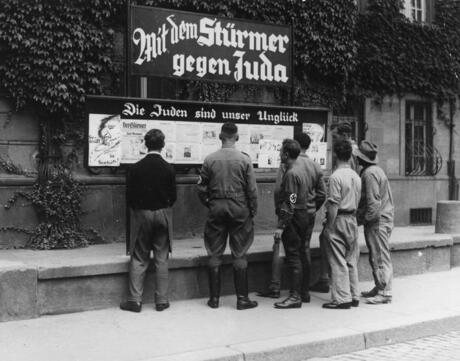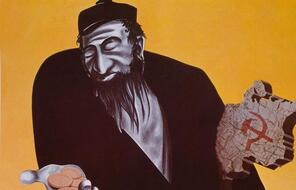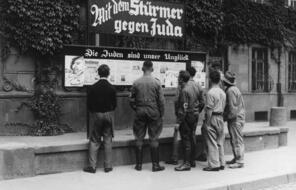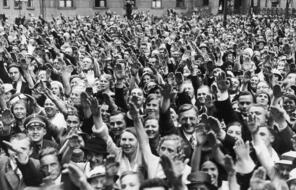
The Power of Propaganda
At a Glance
Language
English — USSubject
- History
- Social Studies
Grade
6–8Duration
Two 50-min class periods- The Holocaust
- Propaganda
Overview
About This Lesson
In the previous lesson, students were introduced to the Nazis’ idea of a “national community” shaped according to their racial ideals, and the way the Nazis used laws to define and then separate those who belonged to the “national community” from those who did not. In this lesson, students will continue this unit’s historical case study by considering the nature of propaganda and analyzing how the Nazis used media to influence the thoughts, feelings, and actions of individuals in Germany. While the Nazis used propaganda as a tool to try to condition the German public to accept, if not actively support, all of their goals (including rearmament and war), this lesson focuses specifically on how they used propaganda to establish “in” groups and “out” groups in German society and cultivate their ideal “national community.” After carefully analyzing several propaganda images created by the Nazis, students will consider the ways in which this material influenced individuals, and they will be encouraged to consider how the effects of propaganda are more complicated than simple brainwashing.
Preparing to Teach
A Note to Teachers
Before teaching this text set, please review the following information to help guide your preparation process.
Lesson Plans
Day 1
Activities
Day 2
Activities
Assessment
Extension Activities
Materials and Downloads
The Power of Propaganda
Adding to Evidence Logs, 1 of 3
Youth and the National Community
Unlimited Access to Learning. More Added Every Month.
Facing History & Ourselves is designed for educators who want to help students explore identity, think critically, grow emotionally, act ethically, and participate in civic life. It’s hard work, so we’ve developed some go-to professional learning opportunities to help you along the way.
Exploring ELA Text Selection with Julia Torres
On-Demand

Working for Justice, Equity and Civic Agency in Our Schools: A Conversation with Clint Smith
On-Demand

Centering Student Voices to Build Community and Agency
On-Demand
















